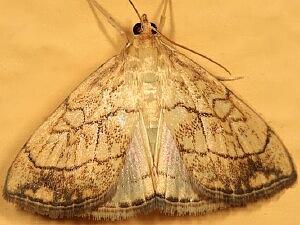
|

Digital Guide to Moth Identification |

|
|
At MPG there are just two size for photographs used on living moth plates (225x225 and 300x225 pixels). Not only are the sizes precise, but their usages are standardized. You will see on the plates many exceptions to the standards described here. They tend to be photos acquired in the very early days of MPG when we were almost desperate for photos of many species. Photos that do not conform to present standards will be replaced as opportunities arise. All new photographs, with rare exception, must conform to standards shown here.
Photographs in this row are improperly cropped. This exhibition is contrived to provide examples without reflecting on the abilities of photographers.
Photographs in this row are properly cropped to fill the available space. Antennae and legs are sacrificed in favor of larger body size and detailed markings.
Square Photographs - See Fast Plates for Cues Most Noctuid moths and families (or groups within families) that typically pose in the manner shown below, require full dorsal views. Such views permit one to see all the markings of the forewings without distortion that would be evident in moths that pose with "tented" wings (see following row of photographs).
But within these same families there are groups that "tent" their wings or wrap them tightly about the body. They require severely low lateral views. By glancing at the "Fast" living moth plates you will quickly see whether dorsal or lateral views are preferred or most commonly used for any group of species.
300-pixel Wide Photographs - When to Use Them Wider photographs are required for species that typically pose with their wings spread open. Most Geometrids, certain groups of Crambids and even some Noctuids most often pose this way, providing excellent views of the hindwings which are often an aid to identification.
Some species frequently pose with the wings closed but at other times hold them spread open. At times a photographer may be able to coax a moth to open the wings after obtaining a closed-wing shot. Both views will be valuable as aids to identification, the prettiest photo might be preferred.
Always 300-pixel Wide - Special Groups There are two groups for whom wide photographs are mandatory because the moths would otherwise appear too small in square photos for their markings to be visible to a sufficient degree. These are the Plume Moths, Pterophoridae, and the Crambid "Snout Moths" shown below.
|
|||||||||||||||||||||||||||||||||||
Moth Photographers Group at the Mississippi Entomological Museum at the Mississippi State University
Submit2.shtml -- 11/12/2009
.jpg)
.jpg)
.jpg)
.jpg)
.jpg)
.jpg)
.jpg)
.jpg)



















